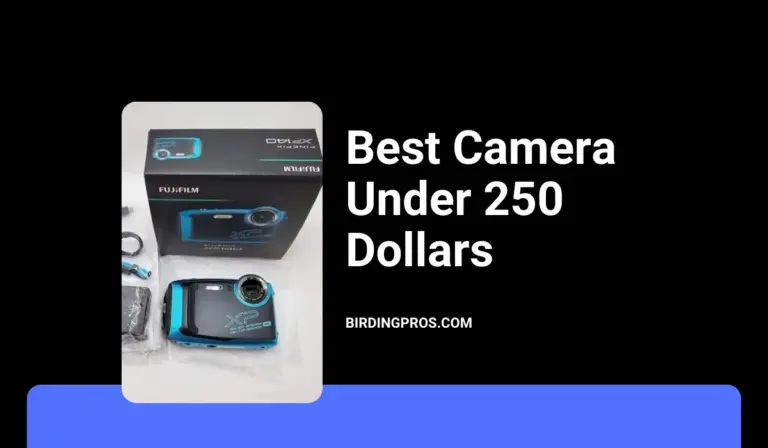5 Best Birding Scope Tripod in 2024
Here is the ultimate list of 5 best birding scope tripod for 2024 you can trust for your birdwatching or capturing needs.
Table of Contents
What is Best Birding Scope Tripod?
Birding, or birdwatching, is a beloved hobby for nature enthusiasts. A crucial piece of equipment for birders is a good tripod, which provides the necessary stability for birding scopes.
In this guide, we’ll explore the best birding scope tripods, key features to look for, top models available in 2024, and tips for choosing and using the right tripod for your needs.
Why a Good Tripod is Essential for Birding
When you’re out in the field, stability is key. A good tripod keeps your birding scope steady, ensuring you get clear and sharp images of birds. Without a stable tripod, even a slight movement can result in blurry images, making it hard to observe and identify birds accurately.
A tripod reduces fatigue by holding the scope steady, allowing you to enjoy longer viewing sessions without straining your arms or eyes.
How to Choose The Best Tripod for Birding Scope
Firstly, consider the stability and weight capacity of the tripod. Your tripod must support the weight of your birding scope and any additional gear you might use. A sturdy tripod prevents shaking and movement, ensuring clear and sharp images.
Next, think about height adjustability. A tripod that can extend to eye level while allowing you to collapse it for easy transport is ideal. This flexibility is crucial for different birding scenarios, whether you’re standing, sitting, or lying down.
Portability and weight are also significant factors, especially if you travel frequently or go on long birding excursions. Lightweight materials like carbon fiber are preferred for their durability and ease of carrying, although aluminum is a more budget-friendly option that still offers good durability.
Material choice affects both weight and vibration dampening, with carbon fiber being superior at minimizing vibrations.
Another essential feature is the quick-release plate, which allows you to swiftly attach and detach your scope, ensuring you don’t miss any action. Leg locks—whether twist locks or flip locks—should be easy to use and secure to prevent accidental collapsing.
The head type of the tripod, such as a pan and tilt head for precise control or a ball head for more flexibility, can greatly influence your birding experience.
Choosing the right tripod depends on your specific birding needs:
- Assess Your Birding Environment: If you often bird in wet conditions, a waterproof tripod like the Sirui W-2204 is ideal.
- Balance Budget and Features: Determine which features are essential and find a tripod that meets those needs within your budget.
- Portability: If you travel frequently, a lightweight and compact tripod is crucial.
Tips for Using Your Birding Scope Tripod Effectively
- Setting Up for Stability: Spread the tripod legs fully and use the center column sparingly to maintain stability.
- Maintaining Your Tripod: Regularly clean the legs and locks, especially after exposure to dirt or saltwater, to ensure smooth operation.
- Adjusting for Terrain: Use the tripod’s leg angle adjusters to stabilize on uneven ground, and consider using spiked feet for soft terrain.
Additional Accessories to Enhance Your Birding Experience
- Tripod Carrying Cases: Protect your tripod during transport with a durable carrying case.
- Extra Quick-Release Plates: Have multiple plates for quick swaps between different scopes or cameras.
- Tripod Feet: Get different feet options (rubber, spiked) for varying terrains.
- Maintenance Kits: Keep your tripod in top condition with a cleaning and maintenance kit.
Key Features to Look for in a Birding Scope Tripod
When choosing a tripod for birding, consider these features:
- Stability and Weight Capacity: Make sure the tripod can support your scope and other equipment.
- Height Adjustability: Look for a tripod that can extend to eye level and collapse for easy transport.
- Portability and Weight: Lightweight tripods are easier to carry on long birding trips.
- Material: Aluminum tripods are sturdy and affordable, while carbon fiber tripods are lighter and better at absorbing vibrations.
- Quick-Release Plate: This feature lets you quickly attach and detach your scope.
- Leg Locks: Decide between twist locks and flip locks based on what you find easier to use and more stable.
- Head Type: Pan and tilt heads offer precise control, while ball heads provide more flexibility.
Top Birding Scope Tripods in 2024
Here are some of the best tripods for birding scopes this year for you, this list is carefully reviewed and took internet opinions, so you have to trust them by your own.
1. Manfrotto MT055CXPRO3

- Key Features: Carbon fiber legs, Quick Power Lock system, 90-degree center column
- Pros: Extremely stable, lightweight, versatile positioning
- Cons: On the pricier side
- Price Range: $400-$500
2. Vortex Optics Pro GT
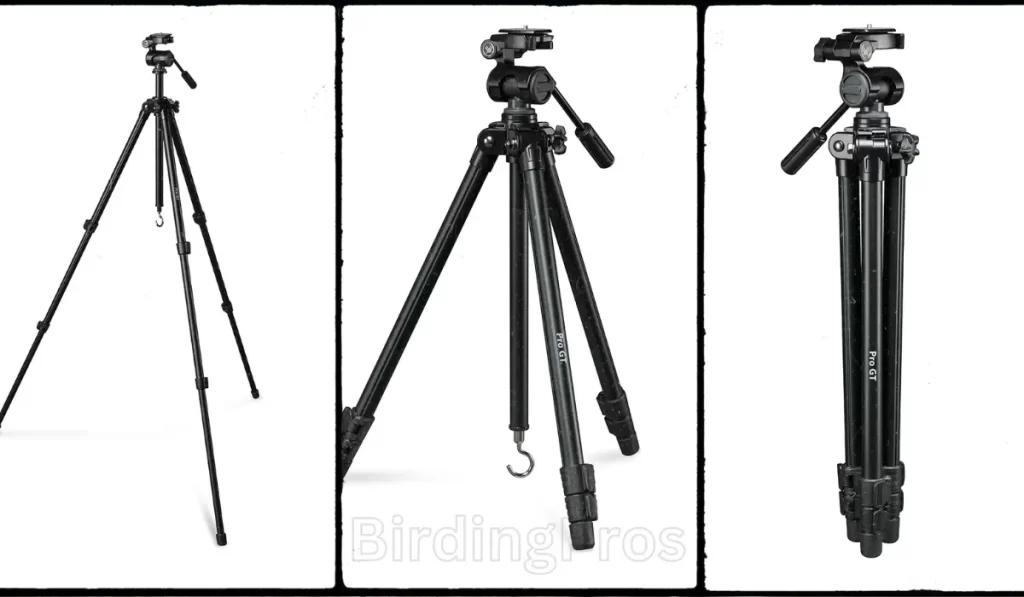
- Key Features: Aluminum legs, flip-lock leg locks, 3-way pan head
- Pros: Affordable, durable, easy to adjust
- Cons: Heavier than carbon fiber options
- Price Range: $150-$200
3. Gitzo GT2542 Mountaineer Series 2
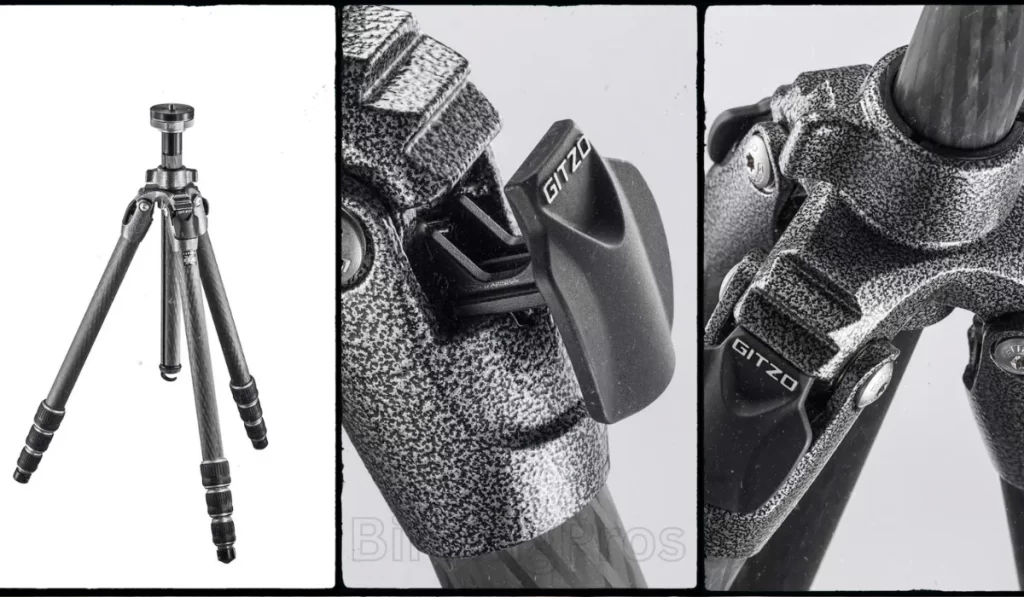
- Key Features: Carbon fiber legs, G-lock Ultra twist locks, reversible center column
- Pros: Superior build quality, lightweight, excellent stability
- Cons: Expensive
- Price Range: $800-$900
4. Sirui W-2204 Waterproof Carbon Fiber Tripod
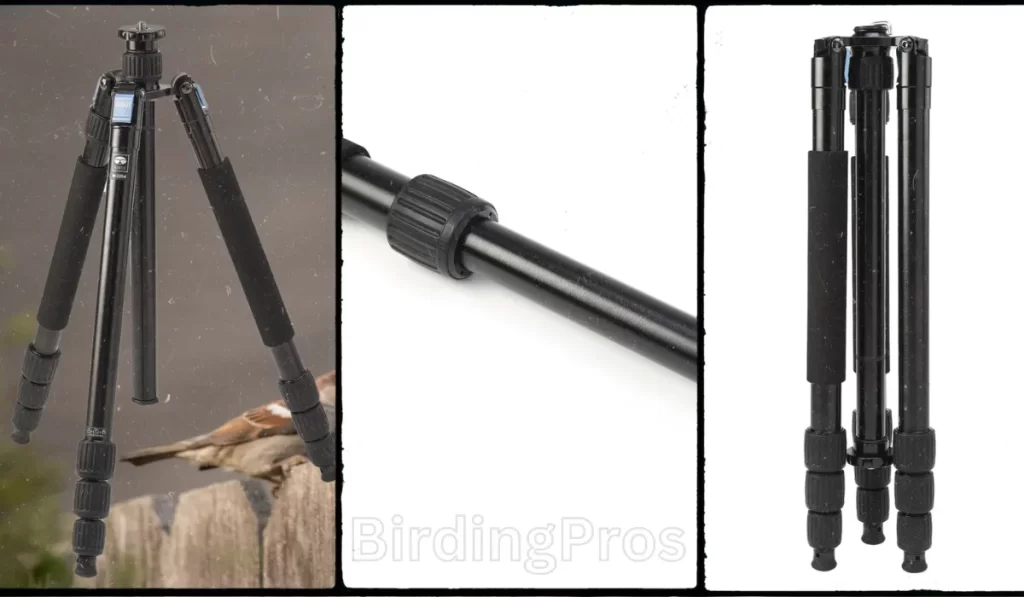
- Key Features: Waterproof legs, twist locks, removable monopod leg
- Pros: Versatile, lightweight, great for wet conditions
- Cons: Twist locks can be slower to operate
- Price Range: $300-$400
5. Benro Mach3 TMA38CL
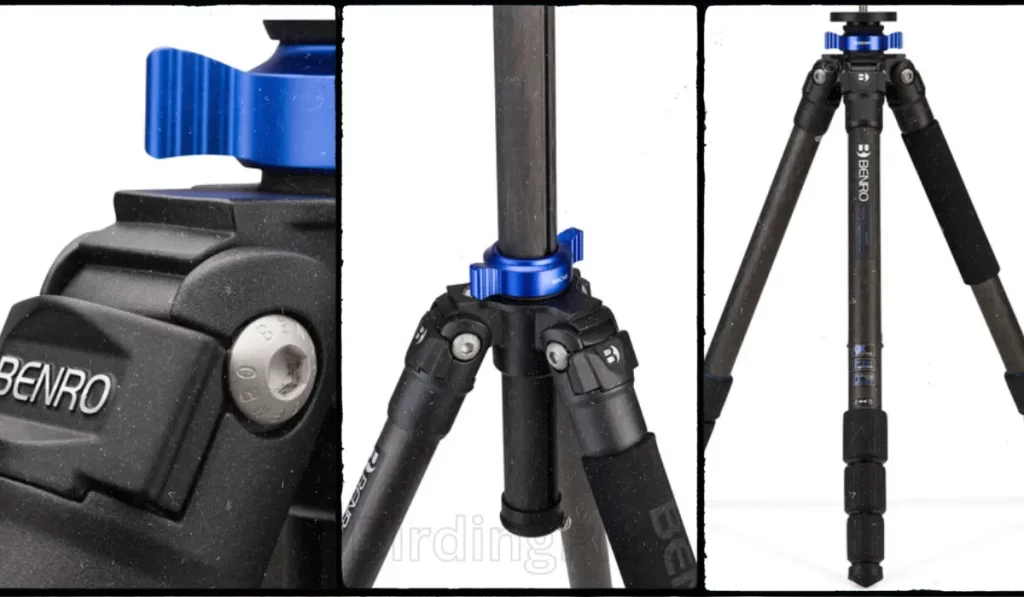
- Key Features: Carbon fiber legs, twist locks, short center column included
- Pros: Lightweight, stable, versatile
- Cons: Slightly bulky when packed
- Price Range: $350-$450
Frequently Asked Questions (FAQs) About
What is the best material for a birding tripod?
A: Carbon fiber is preferred for its lightweight and vibration-dampening properties, but aluminum is a durable and more affordable option.
How tall should my tripod be?
A: It should extend to at least eye level and have a minimum height that allows for comfortable use when seated or lying down.
Are quick-release plates necessary?
A: Yes, they allow for fast and easy attachment and detachment of your scope, saving time and ensuring you don’t miss any sightings.
Conclusion
Investing in a high-quality birding scope tripod can significantly enhance your birdwatching experience by providing stability and ease of use.
Whether you’re a beginner or a seasoned birder, choosing the right tripod involves considering stability, portability, and specific features that meet your birding needs.
Call to Action
We hope this guide helps you find the perfect tripod for your birding adventures. If you have any questions or personal experiences with birding tripods, please share them in the comments below. Don’t forget to subscribe to our blog for more birding gear reviews and tips!





